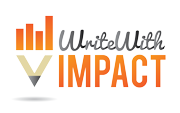Charlotte Eriksson is a 24-year-old singer-songwriter-author who has built a career out of nothing in just the past six years.
Today, through the power of social media, she has attracted a global tribe of fans who love what she stands for and the art she creates. And thanks to publishing platforms like Amazon Createspace and iTunes, she is able to earn a comfortable living from her music and books.
I spoke to Charlotte recently about how she’s been able to accomplish so much on her own without the resources and backing of publishers, record companies, agents, or publicists.
Here’s what I learned from this remarkable one-woman production studio/publishing house/marketing firm:
She uses social media to build her tribe.
Charlotte attracts her following on social media by focusing on building relationships first. She shares the work of other musicians and writers, offers words of encouragement and inspiration to her fans, and interacts with them before even attempting to sell her art.
And once she does have something to offer, they snap it up quickly because they know and trust her. They support her because they love her art, and because they want to pay it forward by paying her for her creations.
Amazingly, Charlotte spent three years cultivating her audience on Tumblr before she even had something to sell to them. Today, Tumblr is her biggest source of sales.
She crowdfunds her albums.
Charlotte has built such a strong fanbase that she not only turns to them to buy her music and books, she can rely on them to fund her next project. Her crowdfunding campaign on Pledgemusic.com raised 244% of the amount she had targeted to cover production costs for one of her albums.
She self-publishes her music and books on iTunes, Amazon, and other platforms. No middleman or woman need apply.
Like so many publishers and artists today, Charlotte is the direct beneficiary of the power and reach of publishing platforms like iTunes and Amazon. Uploading her work there is instantaneous and virtually free. And she doesn’t need to rely on a record company, publishing house, or agent to tell her what, where or when to publish her work.
She does her own marketing and PR.
Charlotte’s online presence stretches across multiple platforms, from WordPress to Tumblr to Spotify to Youtube to Twitter. Enter her name into iTunes and you can see the albums she produced and uploaded herself, or listen to podcast interviews she pitched and scheduled.
She bootstraps her operations and keeps her overhead low.
Charlotte knows how to keep costs low, which gives her the artistic freedom and physical mobility she needs to pursue her art. When she left her hometown of Gothenberg Sweden at the age of 18 to move to London, she was without a home for the first year, and slept on the sofas of her friends and fans.
While she can now afford to rent an apartment in Berlin, she continues to keep her costs to the bare minimum. She doesn’t have any employees and contracts out the instrumentals on her albums to musicians located in other countries before compiling the tracks herself.
She books her own gigs.
Dip into her Twitter feed and you’ll see Charlotte negotiating her next singing gigs directly with large and small venues around Europe.
***
This artist asks for a lot of things — help with recording her album, graphic design expertise for her album and book covers, and professional photo shoots.
But there’s one thing she never has to ask for when it comes to creating or sharing her art: permission.
How about you? How has social media and independent publishing platforms empowered you to create and share your art? Please tell me about it in the comments.
I had the pleasure of interviewing Charlotte on my podcast, which you can listen to over here. She played one of her songs which I think you’ll enjoy.

